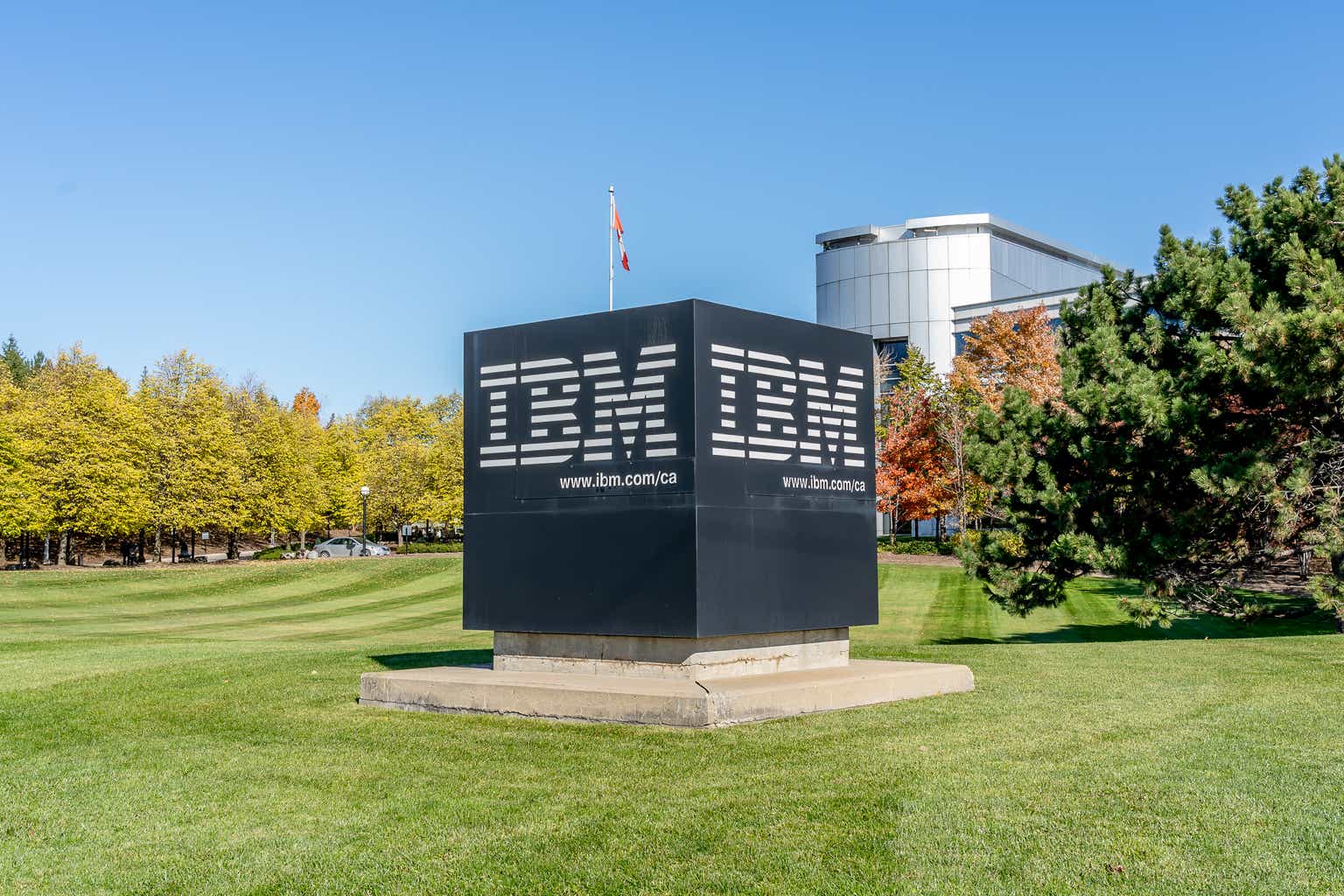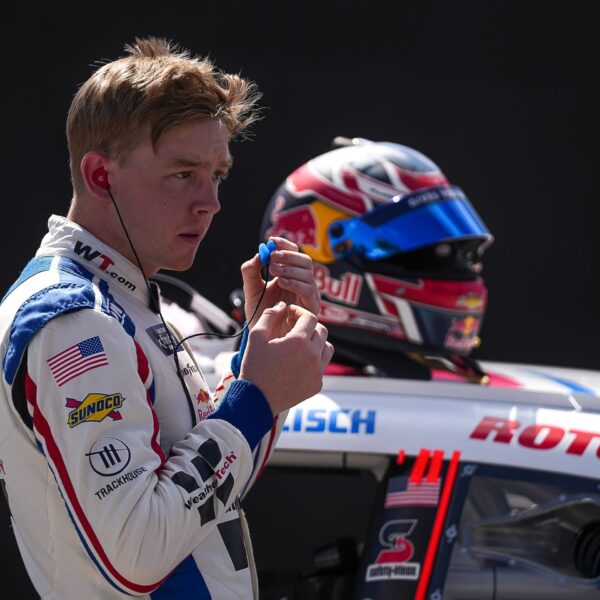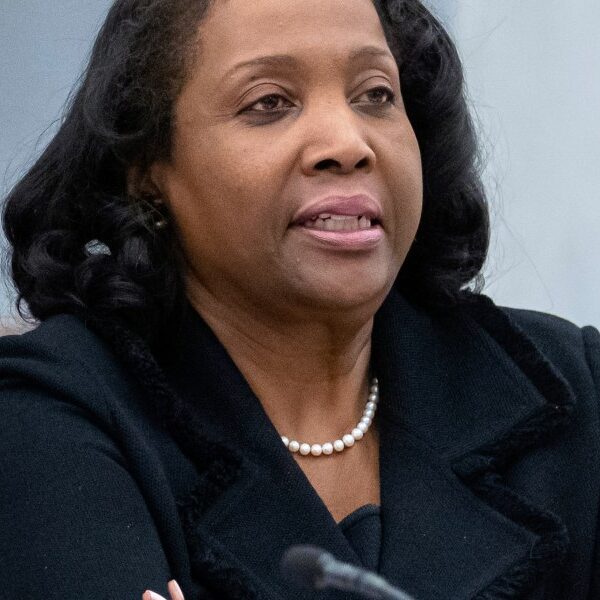Pinstripes Holdings, Inc. (NYSE:PNST) Q1 2025 Earnings Conference Call September 4, 2024 5:00 PM ET
Company Participants
Dale Schwartz – Founder, President and CEO
Tony Querciagrossa – CFO
Conference Call Participants
Brian Bittner – Oppenheimer & Company
Peter Saleh – BTIG
Sharon Zackfia – William Blair
Operator
Good day, ladies and gentlemen, and thank you for standing by. Welcome to the Pinstripes Holding, Inc. First Quarter Fiscal 2025 Earnings Conference Call. [Operator Instructions]. Please note that this conference is being recorded today, September 4, 2024.
During management’s presentation, and in response to your questions, they will be making forward looking statements about the company’s business outlook and expectations, including in respect of guidance for fiscal 2025 these forward looking statements and all those statements that are not historical facts and reflect management’s beliefs and predictions as of today, and therefore are subject to risks and uncertainties, as described in the company’s quarterly report of Form-10k, for fiscal 2024, and subsequent SEC filings. Management will also discuss non-GAAP financial measures as part of today’s conference call. These non-GAAP measures are not prepared in accordance with generally accepted accounting principles, but are intended to illustrate alternative measures of the company’s operating performance that may be useful.
Reconciliations of the non-GAAP financial measures to the most directly comparable GAAP measures can be found in the earnings release. The company has posted its first quarter fiscal 2025 earnings release and an earnings presentation on its website at www.pinstripes.com under the investor relations section.
And now I would like to turn the conference over to Pinstripes Founder, President and CEO, Dale Schwartz.
Dale Schwartz
Good afternoon, everyone, and thank you for joining our call today. Our results for the first quarter did not meet our expectations, as we faced a more challenging macro environment and softer consumer demand than we anticipated. Despite these top line pressures, we made significant progress on improving our venue level cost structure by removing an annualized $10 million across our system. While these improvements are currently being masked by sales deleverage, we are proud to position our brand for improved profitability as the macro environment improves. In addition, during the second quarter, we identify $4 million in annualized savings at the corporate level to further ensure that our team is lean and efficient in order to drive long term growth in both top line sales and corporate EBITDA.
I will dive deeper into these initiatives in a moment, but before we do let me remind you on what set pinstripes apart from other concepts in the market. While we include bowling and bocce, what truly differentiates our brand is our made from scratch, dining. Food and beverage comprise approximately 75% of our total revenue, with bowling and bocce comprising the balance. Equally important is our private events, where each of our locations host over 1000 events per year, representing nearly 50% of our revenue.
Our events, both social and corporate, are an extraordinarily important and profitable facet of our business, creating a flywheel effect of increased brand awareness. In addition to our event flywheel, we have also leaned in a local store marketing as well as driving more private event business through tourism and conventions. Our local store marketing efforts include initiatives like kids club at Pinstripes around the first Saturday of the month, guests can enjoy us one hour before brunch for a fun filled morning of Free Kids themed activities. Another example is our paint and sip nights where guests can enjoy us on select nights to be guided by an art instructor while enjoying a glass of wine and terrific small bites.
In terms of tourism and conventions. For years, we have utilized wedding planners, wedding blogs and wedding vendors as a way to drive increased wedding business. To that end, we are now utilizing a similar playbook to drive increased business from tourism, travel agents and conventions, especially in tourist centric cities like our Florida or Washington, DC locations. With respect to profitability, while Pinstripes is an established player in the restaurant entertainment space nationally with the 17 year history, we remain a relatively modest size company overall.
Over the past six months, we’ve taken an extensive look throughout our company to ensure that we have the resources we need to not only capture the extensive opportunity ahead of us, but also to ensure we are being as efficient as we can be. As stated earlier, our team took a comprehensive look at our venue level cost structure, and identified $10 million on an annualized basis that we could remove from our cost structure without negatively impacting the guest experience. These savings range from strategic hourly and salaried labor savings a more favorable credit card processing agreement to more intense negotiations with our various vendor partners, leveraging our growing scale and brand, we have substantially implemented all of these cost saving initiatives by the end of the first quarter, and we expect to achieve the full run rate [ph] benefit of these savings going forward.
In addition, during the first quarter, we reviewed our corporate level costs and identified approximately $4 million of additional annual life savings and our SG&A. These costs range from negotiations with agency partners to strategic corporate headcount reductions and a renewed focus on marketing efficiency. Following our reviews of both venue level and corporate level costs, we believe we now have the appropriate cost structure to drive long term top line performance through same store sales growth as well as new unit openings, while ensuring we are maintaining sufficient corporate level profitability. Driven by these cost efficiency initiatives and general improvements in our business. We currently anticipate achieving adjusted EBITDA profitability in our third quarter on a sustainable basis going forward. With respect to new units development as we noted last quarter, our development strategy can be categorized into two distinct classifications. First, an established real estate development where we are typically taking over the location of a previous tenant, such as Uniqlo or Crate & Barrel and traffic patents of the area are already well defined.
A second new development where we typically are among the first to open, and the traffic pattern continues to grow as additional retail and dining options open around us, while the long term AUV potential of both types of developments are exciting. The maturation curve on the new developments is typically longer. Within the four venues we opened in fiscal 2024 our Topanga and Aventura venues would fall into the new development classification, while our Orlando and Garden State Plaza in New Jersey locations would fall into the established development classification.
Before I provide some additional detail, I’m proud to say we saw an almost $2 million improvement across the venue level EBITDA for these new venues relative to the fourth quarter, which with each and every venue within the group seeing improvements. Starting with our new development locations in Aventura and Topanga, we continue to expect these units to be in the $7 million AUV range for the year, and the sales trend improvements we are seeing are in line with what we’d expect based on similar units in our mature store base, like our Bethesda, Maryland venue. Our established development units in Garden State Plaza and Orlando continue to accelerate up their maturation curve, and we still expect them to be approximately 10 million locations in sales for fiscal 2025.
During the first quarter each of these established development units achieve venue level EBITDA profitability for at least one of the periods in a quarter and we anticipate the improvement trends to continue in the second fiscal quarter of 2025. As with any of our openings, we made substantial investments in the first few months of operations, particularly in labor, to provide a great guest experience from day one. Ultimately, these upfront investments put these four new locations on strong footing to ensure they can achieve their long term potential. Within the development pipeline, we currently expect to open two new venues in Walnut Creek, California and Coral Gables, Florida, late in the second quarter or in the third quarter of fiscal 2025.
We look forward to these new venues joining their sister location in the markets of San Mateo and Aventura. As we look further into the development funnel, we have five locations currently under development, with Bellevue and Lake Union in Washington and Jacksonville, Florida, joining Walnut Creek and Coral Gables and another potential 30 sites in various stages of development. Combined with our current portfolio of 17 open locations, we now have 22 total locations open or under lease, and our pipeline for new locations remain strong. Despite the current macro volatility and consumer softness, we continue to believe that our high quality, connection oriented dining, entertainment and event spaces put us in a strong position to drive long term shareholder value. Of course, none of this would be possible without the passion and dedication of our more than 1800 team members as they provide our guests with those magical moments they’ve come to expect from visiting Pinstripes.
With that let me now turn the call over to our CFO, Tony to discuss our fiscal first quarter results in greater detail.
Tony Querciagrossa
Thank you, Dale and good afternoon, everyone. For fiscal first quarter, total revenue increased 19% to $30.6 million compared to $25.7 million in the same quarter last year, including a 16% increase in food and beverage revenues and 30% increase in recreation revenues. This increase was driven by four new unit openings, offset by a 2.4% decrease in same store sales, and there was no price taken in the quarter.
Turning to expenses, cost of food and beverage as a percentage of total revenue increased 100 basis points to 17.1%, as a percentage of revenue, the increase in food and beverage costs for the first quarter of fiscal 2025 compared to the first quarter of fiscal 2024 was primarily due to inefficiencies resulting from an increase in relatively higher cost to open play sales from the four new locations open in the first quarter of fiscal 2025 compared to the first quarter of fiscal 2024 and modest food cost inflation in seafood and poultry, labor and benefits as a percentage of total revenue increased 200 basis points to 37.1% the increase in store labor and benefits expenses for the first quarter of fiscal 2025 compared to the first quarter of fiscal 2024 was primarily due to the addition of four new stores, contributing to higher store labor and benefits costs, excluding the addition of four new stores, store labor and benefits costs were flat.
Occupancy costs as a percentage of total revenue were 21.4%, other operating expenses as a percentage of total revenue increased 60 basis points to 17.8% venue level EBITDA as a percentage of total revenue, decreased to 7.2% driven by negative store contribution of our four new locations that opened in fiscal 2024 as these stores continue to progress through the maturation curve, with the profitability of this group continuing to improve. As Dale previously mentioned, all four venues within this group saw substantial improvement in venue level, EBITDA sequentially from the fourth quarter to the first quarter. Please refer to our earnings release for a reconciliation of non-GAAP measures.
Our mature stores, those open more than 24 months, generated average contribution margins of 12.6% representing a 240 basis point decline year over year, driven primarily by sales deleverage. General administrative expenses increased 5.5 million compared to 3.5 million in the same period last year, turning the liquidity as of July 21, 2024 we had $5 million in cash and cash equivalents, and $113 million of that outstanding. Subsequent to the end of the quarter, continually address our long term capital needs. We secured 5 million in additional financing from our current lenders, and in conjunction with this financing, Oaktree upsides their potential future funding facility by $10 million.
With that, let me now provide you with some updates to our fiscal year, 2025 guidance as a reminder our fiscal year ends on April 27, 2025 with a 16 week fourth quarter, same store sales growth of negative, low single digits to positive, low single digits and a reminder that our Topanga location will enter our comp base in Q3 and Adventura will enter in Q4. Two new venues, mature store venue level EBITDA, margin of 17% to 20%. General and administrative expenses of $15 million, including $2.5 million of non-cash, stock based compensation and tax. Note that approximately 50% of the benefits of our recent cost out actions will impact fiscal 2025, with 100% being reflected in fiscal 2026.
Pre-opening of approximately $3 million, and adjusted EBITDA of $8 million to $12 million.
We’d like to thank you again for your interest in Pinstripes. Dale and I are now happy to answer any questions that you may have. Operator please open the line for questions.
Question-and-Answer Session
Operator
[Operator Instructions]. And our first question comes from the line of Brian Bittner with Oppenheimer & Company
Brian Bittner
I just want to ask further about the updated financial guidance for fiscal ‘25 whether we’re looking at EBITDA or venue level margins, you are assuming a dramatic hockey stick like move in both of those for the rest of the year. I obviously listen to your comments. I understand you anticipate new store profitability to improve. I understand the cost savings measures, but it seems like there’s a lot more math on top of those, like your mature stores, you’re assuming a major shift in the margin trend from what we just saw to what’s going to happen the rest of the year. So can you just help us get some confidence that next quarter we’re not going to see another change in the outlook? What gives you confidence that these numbers are achievable?
Tony Querciagrossa
So a couple things. Brian, that’s Tony. First, you know, if you look at our business, we’re certainly not a linear business, right? So Q3 is very important, given the mix of events and really the busy holiday season, and you know, given the degree of operating leverage in the business, it’s a big deal, right? So Q3 you know, even on the cost saving side, particularly at the venue level, a lot of it’s going to come through in Q3 because it is variable in nature. Secondly, I’d say, through the first four weeks of the second quarter, we are seeing the expanded margins just on preliminary results, so you know, and that’s in the face of softer open play sales in particular, and but we’re still seeing the margin expansion coming through. So you know, those two data points, I think, in kind of context, and it should help you get some confidence around the ramp and margins for the rest of the year to get to our updated guidance.
Brian Bittner
Thanks for that. And just second question and final question on the unit growth. You’re going to open two units this year versus four previously is that a signal of any change in near term unit growth outlook over the next year or two? I know that you’re still working on 30 sites, and I know the pipeline is strong, but just trying to get a sense of how you’re thinking about more near term unit growth opportunities, both this year and next.
Dale Schwartz
Yeah, look so, you know, Walnut Creek, Coral Gables, you know, are the two units that are well on track to open in the fiscal year. Our Seattle sites continue to make progress. You know, haven’t gone away. And you know, we in Jacksonville, you know, we just took possession of site very recently, so everything’s on track. It’s just pushing a little bit to the right. And our long term, you know, 6 to 8 unit outlook, while it may vary up and down, you know, it’s
Operator
And the next question comes from the line of Peter Saleh with BTIG.
Peter Saleh
I did want to come back to the conversation on unit development. Can you just give us a little bit more color on the timing of Walnut Creek and Coral Gables. I mean, we had anticipated September, October of this year. What are you guys thinking now in terms of the timing of those openings?
Dale Schwartz
Peter, it’s Dale, Walnut Creek. We’re anticipating October, rather imminently, just the nature of just somewhat standard final permits from cities Coral Gables, roughly November-ish, much the same, but both some permitting as well as completing construction while amongst a mixed use project with a hotel above us, etc. And as Tony pointed out, a few of the additional sites next year will layer in second half of the calendar year.
Peter Saleh
And then just on the same store sales, you know, when we last spoke, you know, you guys had exited April. It looked like April was a really strong month. Yes. And here we are, you know, down to four in terms of same store sales. Can you just give us some color around how the quarter progressed and the breakout between check price call it mix and traffic I was under the impression you guys want to take about 200 basis points of price in the month of July, so just trying to understand how that all shakes now?
Dale Schwartz
In terms of how we paced, you know, May was down about 1%, June really hit us hard, almost down 6% and then July flattened out. So that’s how we sort of paced, in terms of breakdown, you know, we do indicate price. Price went into effect in the beginning of the second quarter. It’s about 2% which is, I think, what you just said, and you know, the balance we just say, is volume or traffic. So we don’t, we don’t break out check at this time.
Operator
And the next question comes from the line of Sharon Zackfia with William Blair.
Sharon Zackfia
I guess just a follow up on the cadence through the quarter, since you haven’t been public that long, is it pretty unusual to have kind of an outlier like June, or is the business kind of more susceptible to, I guess, some more volatility and intra quarter trends? I don’t know what, kind of happened in June, if it was a weather dynamic or anything else that you can really attribute it to, because it looks like May and July were relatively similar.
Tony Querciagrossa
Yes Sharon, yeah, it was a couple things. One is, we had some we don’t have a lot of units, so all it takes is a couple of kind of events to shift things on open play we saw some weather dynamics kind of hurt our patio business and a few ways. And then events can cause volatility so we did see some corporate events shift to shift to the right. As an example, though in the first four weeks of the second quarter event bookings, which don’t necessarily actualize immediately of course, we’re up 5.6% versus prior year. We’re seeing a little bit of shifting around of events, but, and that can cause volatility. But you know, overall, the events business is still looking pretty good.
Sharon Zackfia
Okay. And then this kind of June, would you have just characterized that as an outlier? I mean, was August kind of more similar to May and July?
Tony Querciagrossa
August was a little bit like June.
Sharon Zackfia
Okay. How do I think about kind of the magnitude of the profit revision, because there are so many moving parts going on. And you know, two months since you gave that initial profit guidance, and we’re kind of cutting it in half. So the comp guidance changed a little bit, but not a lot. Obviously, you may be losing a few units, which impacts the leverage you get there. So if you could help kind of triangulate all the puts and takes and the profit guide.
Tony Querciagrossa
Sure. So if you look at just the midpoints where we went, it’s about $10 million net. So $5 million is a combination of sales deleverage and a few cost misses that we’ve addressed, but, but obviously already had a quarter of those $7 million I’d say, of new store drag, you know, just not being at the profitability level when we set the initial guidance. And then that’s offset by the $2 million of additional SG&A takeout that we just announced.
Sharon Zackfia
And then, I guess last question for me, there’s then, kind of two schools of thought on, kind of, what’s going on, and kind of the more experiential dining category. One is that competitions ratcheting up, so it’s just tougher. The other is that maybe the segment’s kind of waning. I guess when you look at obviously a softer than expected quarter, than you would have expected. Or do you think either of those arguments have any kind of validity?
Dale Schwartz
Sharon, it’s Dale. I think for us, and a lot of our peers, as you know, we’re mostly up against some very sizable thanks to our sales increases from a year prior. So some of that call it revenge spend, or some of the excitement post covid, we’re all up against that. Of course, our performance has been considerably better than a lot of our peers that have seen more. As you know, double digit negative sales. Of tops. So, no, I don’t think it’s a competitive issue, per se, and I don’t think it’s an overall waning of the category. I think it’s just lapping tops, mostly that.
Operator
Ladies and gentlemen. We have reached the end of today’s question and answer session, I’d like to turn the call back over to Dale Schwartz for closing remarks.
Dale Schwartz
I want to thank everybody again for joining us this afternoon. We’re looking forward to opening our next two locations rather soon, and we welcome you all again to enjoy any of our locations and have fun with the magic that we deliver. Thank you.
Operator
This concludes today’s conference. You may disconnect your lines at this time. Thank you for your participation.












